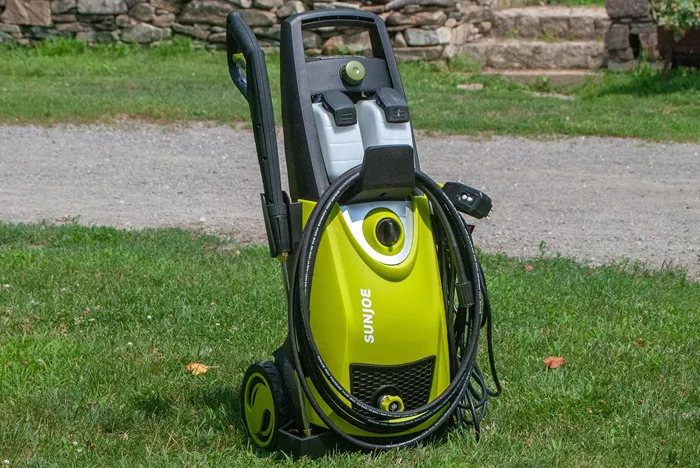Patios endure constant exposure to dirt, grime, algae, and harsh weather, leading to slippery surfaces, discoloration, and even structural damage over time. Power washing offers an effective way to restore these outdoor spaces by using pressurized water to remove stubborn buildup. However, selecting the wrong equipment can harm delicate materials like wood or leave surfaces unevenly cleaned. This guide explores how to choose a power washer that balances cleaning power, safety, and practicality for your patio.
Electric vs. Gas-Powered Power Washers: Making the Right Choice
The first step in choosing a power washer is deciding between electric and gas-powered models. Each type has distinct advantages and limitations.
Electric Power Washers
Pros: These models are lightweight, quieter, and require minimal maintenance. They’re ideal for small to medium-sized patios and are easy to storeCons: Their mobility is limited by power cords, and they generally deliver lower pressure compared to gas-powered units.
Gas-Powered Power Washers
Pros: Gas models provide stronger water pressure, making them suitable for large patios or surfaces with deeply embedded stains like oil or mildew. They’re also cordless, offering greater flexibility.Cons: These units are heavier, louder, and require regular maintenance, such as fuel refills and engine checks.For most residential patio cleaning tasks, electric power washers are sufficient. Gas-powered models are better suited for heavy-duty jobs or commercial use.
Key Features to Prioritize When Choosing a Patio Power Washer
Water Pressure (PSI)
Water pressure determines how effectively a power washer can remove dirt. Patios made of concrete or stone generally require higher pressure to clean thoroughly, while softer materials like wood or composite decking need gentler settings to avoid damage. Look for models with adjustable pressure controls to cater to different surfaces.
Water Flow Rate (GPM)
The flow rate affects how quickly water is delivered. A higher flow rate cleans faster but consumes more water. Balancing efficiency with water conservation is key, especially for eco-conscious users.
Nozzle Types and Spray Patterns
Interchangeable nozzles allow you to adjust the spray angle for various tasks:Narrow-Angle Nozzles: Designed for tackling tough stains but should be used cautiously to avoid surface damage.Medium-Angle Nozzles: Ideal for general patio cleaning, offering a balance of power and safety.Wide-Angle Nozzles: Perfect for rinsing surfaces gently after cleaning.
Portability and Ergonomics
A portable design is essential for maneuvering around patios. Features like wheels, ergonomic handles, and lightweight frames reduce strain during use. Additionally, a longer hose minimizes the need to reposition the machine frequently.
Detergent Compatibility
Some power washers include built-in tanks for applying cleaning solutions, which are particularly useful for removing mold, mildew, or grease. Ensure the model you choose supports patio-safe detergents to avoid harming plants or surfaces.
Top Power Washer Recommendations for Different Needs
Best Electric Option: Karcher K5 PremiumFeatures: Compact design, adjustable pressure settings, and a built-in detergent tank.Ideal For: Homeowners with medium-sized patios seeking a balance of power and convenience.
Best Gas-Powered Option: Simpson MegaShot
Features: Robust construction, high-pressure output, and portability.Ideal For: Large patios or commercial spaces requiring deep cleaning.
Safety Guidelines for Power Washing Patios
Always wear protective gear, including safety goggles and sturdy footwear.Test the pressure washer on an inconspicuous area to ensure it won’t damage the surface.Maintain a safe distance between the nozzle and the patio to prevent accidental etching or chipping.Avoid directing water toward electrical fixtures, windows, or outdoor furniture.
Maintaining Your Power Washer for Longevity
Rinse the system thoroughly after each use to prevent detergent residue or debris from clogging the components.Store the machine in a dry, covered area to protect it from moisture and extreme temperatures.Regularly inspect hoses, seals, and nozzles for wear and tear, replacing parts as needed.
Common Mistakes to Avoid
Using Excessive Pressure: Aggressive settings can erode mortar between pavers or splinter wood. Start with lower pressure and increase gradually if needed.Neglecting Detergent: Water alone may not remove oily stains or biological growth. Use appropriate cleaners for better results.Rushing the Drying Process: Allow the patio to dry completely before applying sealants or using the space again.
Eco-Friendly Power Wash
Redirect or collect runoff water to prevent chemicals from entering storm drains or harming plants.Opt for biodegradable detergents to minimize environmental impact.Choose electric models over gas-powered ones to reduce noise pollution and emissions.
Conclusion
The best power washer for your patio depends on its size, material, and the level of grime you’re tackling. Electric models are user-friendly and eco-conscious, while gas-powered units excel in heavy-duty scenarios. Prioritize adjustable settings, safety features, and portability to ensure efficient and damage-free cleaning. By understanding your needs and following proper techniques, you can keep your patio looking pristine for years to come.
Releted topics:
What is the Best Shower Scrubber: A Comprehensive Guide
What is the Best Electric Floor Cleaner: A Comprehensive Guide

